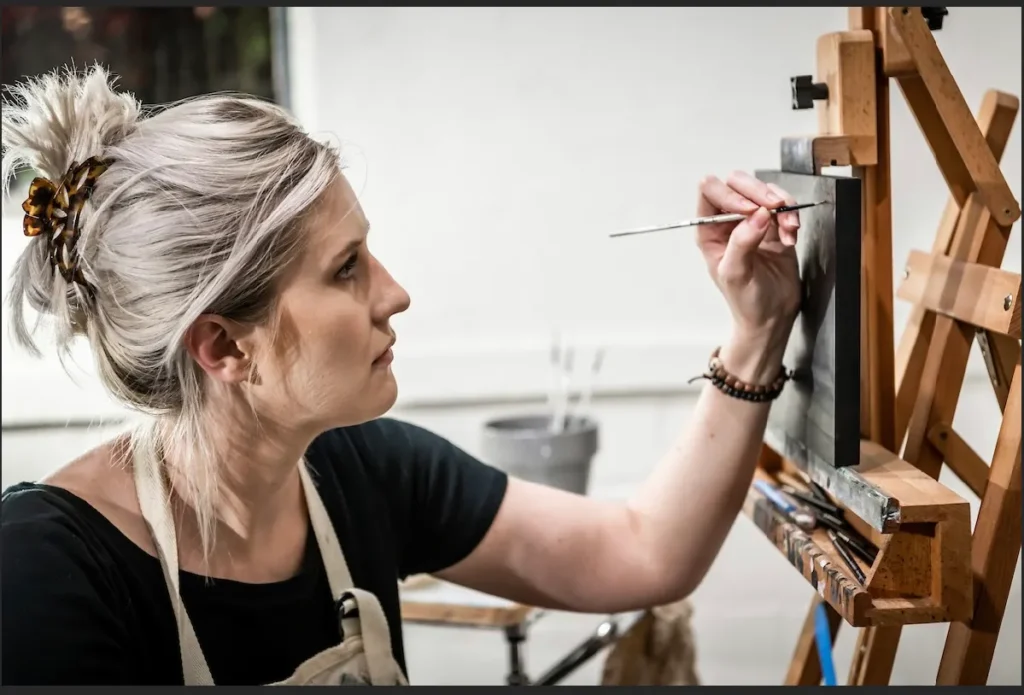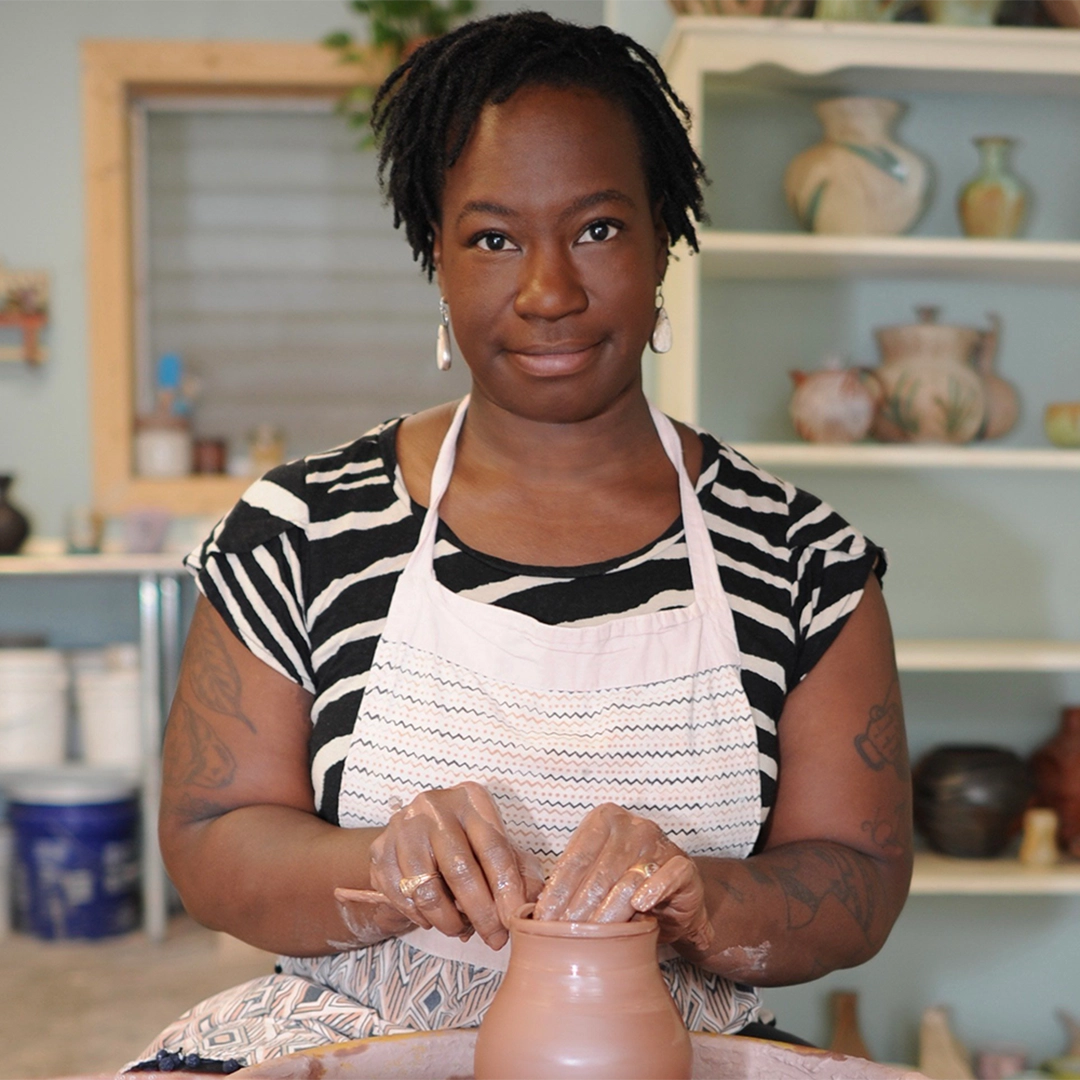by | October 28, 2025
Ericka Sobrack’s Uncanny Paintings of Florida Suburbia
Orlando-based painter Ericka Sobrack captures the eeriness of a Florida suburb in her realistic landscapes.

When she was an undergraduate student at the University of Central Florida, Ericka Sobrack had a breakthrough. She fell in love with color and the tactile quality of paint, but it was also essential to her to be authentic in her work. Sobrack landed on a childhood setting as her subject. While working on a large acrylic painting of a playground as an MFA student at UCF, she casually added a pair of Converse tennis shoes hanging from the back of a set of monkey bars. It was a small detail, but it offered an intriguing hint of narrative possibility.
“I wasn’t thinking much about it (in the moment),” Sobrack says. “But then reflecting on it, I was like, ‘Holy shit, there might be something here’—as far as introducing my own story, but having it be ambiguous enough (so) somebody could think about their own associations.”
The painting became one of Sobrack’s first nocturnes, and a signature of her ongoing explorations of suburban spaces mapped in a haunting and evocative body of work: eerily isolated houses, street corners, swimming pools and lawns. These scenes are often illuminated by a pale moon, phosphorescent lamps or the headlights of an oncoming car. “That was the doorway into what I’m doing now,” Sobrack says.

Sobrack, 35, moved to Orlando from her native Minnesota when she was about 12. In her formative years, she observed the geography and architecture around her. “(In) Orlando, we have a lot of midcentury housing,” Sobrack says. “Back in the day, when they were building them, it was (for) the idealistic nuclear household (with) the manicured lawn, the white picket fence. I was thinking, how do I twist this on its head?”
Although Sobrack grew up bouncing between schools during her parents’ divorce, she was drawn to painting because she enjoyed it. Her work speaks to budding anxieties about seeming domestic tranquility unsettled by darker forces, captured in an uncanny realism that feels subversive.

It’s hard not to bring up the example of filmmaker David Lynch, who also enjoyed a lifelong painting career. He’s best known for the surreal derangements of films like “Blue Velvet” and the television series “Twin Peaks,” which turn apple-pie Americana inside out and also embrace a dreamlike sense of the ordinary made strange.
Somewhat like Lynch’s works, Sobrack’s paintings evoke mystery and varying degrees of unease. In her 2022 paintings of a Radio Flyer tricycle, the isolated trike holds the eye with its cherry-red color, but its handlebars cast a foreboding shadow across dark pavement riven with cracks. The viewer is first struck by the color, then the eerie sense of abandonment and suggestion of a threat. The painting could be a frame from a horror movie—or certainly the poster for one. The stillness that inhabits these paintings needn’t always trigger the uncanny. Sometimes they’re startlingly realistic.

Sobrack’s paintings also serve as documentary pieces, often cataloguing a quintessentially Floridian vibe (and of the Minnesota drawn from her memory) through their affectionate rendering. Early on, the artist looked to the tradition of genre painting and aimed to adapt it to “the idea of day-to-day things that we see in our commutes, whether or not they’re going to be here 50 years from now.”
Sobrack chooses to paint on wood, rather than canvas, because of its smoother surface. The dimensions for her pieces range anywhere from 6-by-6 inches to 48-by-60 inches. “I don’t like a lot of textural brushstrokes to distract from the image quality,” she explains. “It’s mostly about the image, rather than the process of the physicality of paint for me … I also like the small format because it allows me to get through ideas a lot quicker—as opposed to working 100 hours on one painting.”

The artist often works from pictures she takes on her phone and uses Photoshop to edit her source material. “I’ll take most, if not all, of the information out: the background, the trees, any sort of defining qualities of the house, just to keep it more ubiquitous in that way,” she says.
During this process, she considers what sort of story to suggest. Over the years, she has begun to lean harder on the intuition of “going into the studio and then reacting to that painting as I’m making it, because ultimately, the magic happens in that studio time.” The paintings can surprise her, sometimes becoming something completely different than what she had first imagined.

In doing so, Sobrack reconnects with her own early affinities for storytelling. “As far as these little pockets of detail and instances of hyperreality, I’ve always been like that,” she says. “I’ve always really been into the ‘I Spy’ books, or ‘Where’s Waldo?’ And I think (of) that influence because it’s an unassuming little pocket of information on a painting. (I ask myself), what can I do to hide little pockets of information in here?”
For more Florida artists, click here.
About the Author
Steve, a Tallahassee native and Flamingo contributor since 2017, has written about film, music, art and other popular culture for publications including The Wall Street Journal, The Washington Post, the Atlanta-Journal Constitution, GQ, and The Los Angeles Times. He is the artistic director for the Tallahassee Film Festival and writes a monthly film newsletter for Flamingo, Dollar Matinee.





